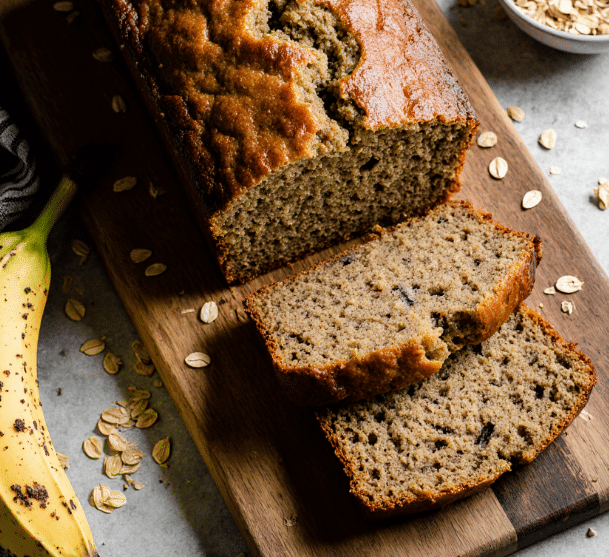Recetas Mexicanas y de Todo el Mundo group | CAPIROTADA
Capirotada is one of the most cherished desserts in Mexican cuisine, especially during the Lenten season. This traditional Mexican bread pudding blends sweet and savory ingredients, creating a dish rich in history and flavor. Featured frequently in the Recetas Mexicanas y de Todo el Mundo Facebook group, Capirotada reflects the heart of community cooking and family tradition.
Table of Contents
What Is Capirotada?
At its core, Capirotada is a Lenten dessert made with layers of toasted or fried bread, piloncillo syrup, cheese, dried fruits, nuts, and warm spices like cinnamon and cloves. It’s more than just a dessert—this dish is a cultural symbol tied to Catholic observances during Holy Week.
According to MexConnect’s history of Capirotada and its religious symbolism, each ingredient represents a part of the Passion of Christ. Bread symbolizes the Body, cinnamon sticks represent the Cross, cloves are the nails, and the melted cheese evokes the Holy Shroud. These deep meanings elevate Capirotada from a simple dessert to a spiritual and communal experience.
In modern kitchens, variations of Capirotada are emerging that respect tradition while incorporating creativity. As noted in this modern recipe by Serious Eats, chefs are experimenting with vegan, gluten-free, and even deconstructed versions of this classic dish, making it more accessible while honoring its origins.
Historical Origins of Capirotada
The history of Capirotada dates back to colonial Mexico, where it was influenced by Spanish bread pudding. Over time, it evolved to include indigenous Mexican ingredients like piloncillo, local fruits, and regional cheeses. It became associated with Lent due to the use of inexpensive, meat-free ingredients and the dish’s ability to feed large families during times of fasting.
Originally, Capirotada was a practical way to use up stale bread, but it became a symbol of family, faith, and resilience.
Traditional Mexican Capirotada Recipe
Here’s a basic recipe for traditional Capirotada as prepared in many Mexican households:
Ingredients:
- 6 bolillo rolls (or any crusty bread), sliced and toasted
- 2 cups piloncillo, grated
- 2 cups water
- 2 cinnamon sticks
- 3 cloves
- ½ cup raisins
- ½ cup chopped pecans or peanuts
- ½ cup shredded coconut (optional)
- 1 cup shredded cheese (queso fresco or mild cheddar)
- Butter or oil for frying bread (optional)

Instructions:
- In a saucepan, combine piloncillo, water, cinnamon, and cloves. Simmer until a thick syrup forms.
- In a baking dish, layer toasted bread, nuts, raisins, cheese, and syrup.
- Repeat layers until all ingredients are used, finishing with cheese and syrup.
- Bake at 350°F (175°C) for 30 minutes or until the top is golden and bubbling.
- Let it rest before serving warm or at room temperature.
Regional Variations Across Mexico
Different parts of Mexico offer their own unique take on Capirotada:
- Northern Mexico: Often drier, with less syrup and more focus on nuts.
- Central Mexico: Adds bananas, apples, or guava for extra sweetness.
- Southern Mexico: Introduces tropical elements like coconut and pineapple.
- Urban adaptations: May use pan dulce, brioche, or even croissants for richness.
Capirotada in the “Recetas Mexicanas y de Todo el Mundo” Group
The Recetas Mexicanas y de Todo el Mundo Facebook group is a digital treasure trove for food lovers. Around Lent, the group sees a surge in Capirotada posts. Members share generations-old recipes, tips for perfect syrup consistency, and creative new variations that reflect both tradition and innovation.
The group serves as a digital recipe book, preserving culinary heritage while allowing for community-driven creativity. Many members have introduced fusion versions using ingredients from their local cuisines abroad, reflecting the “y de Todo el Mundo” aspect of the group’s name.
Modern and Fusion Takes on Capirotada
Today, Capirotada has gone beyond its humble roots. Contemporary kitchens are reimagining it in delightful new ways:
- Vegan versions: Using dairy-free cheese, coconut milk, and agave syrup.
- Gluten-free alternatives: Substituting bread with gluten-free loaves or cornbread.
- Gourmet takes: Layered with mascarpone, dark chocolate, or berries.
- Dessert bars and cupcakes: Perfect for parties or potlucks.
These reinventions make Capirotada accessible to more people while preserving its comforting essence.
Nutrition and Health Considerations
While delicious, Capirotada is rich in sugar and carbs. A typical serving may include:
- ~300–400 calories per slice
- High in natural sugars from piloncillo and dried fruits
- Modest protein from cheese and nuts
- Rich in iron and fiber (if whole-grain bread is used)
Health tips:
- Use low-fat cheese or skip it altogether
- Opt for whole-grain or multigrain bread
- Reduce syrup sugar content or use stevia substitutes
- Add fruits like apple or banana for natural sweetness
When to Serve Capirotada and Pairing Ideas
Capirotada is traditionally served during Lent, particularly on Fridays. However, it’s also perfect for:
- Family reunions
- Cultural food potlucks
- Holiday brunches
- Community bake-offs
Pair it with:
- Café de olla (spiced Mexican coffee)
- Atole or champurrado
- Hot chocolate made with cinnamon
- Light herbal teas for balance
FAQs About Capirotada
What does Capirotada mean in English?
It loosely translates to “bread casserole” or “bread pudding,” though its meaning is deeply rooted in religious symbolism.
Why is Capirotada eaten during Lent?
Its simple, meat-free ingredients align with Catholic fasting traditions, making it a spiritual and practical dish during Holy Week.
Can I make Capirotada without piloncillo?
Yes, although piloncillo gives it a distinctive flavor. You can substitute with brown sugar, molasses, or maple syrup.
What kind of bread should be used?
Bolillo rolls are traditional, but any crusty bread that can hold syrup without falling apart works well.
Is Capirotada served hot or cold?
It can be served either way. Some prefer it warm right out of the oven, while others enjoy it chilled after it sets.
Final Thoughts
Capirotada is more than just a dessert—it’s a culinary tradition that blends faith, history, and flavor. Whether you follow a classic recipe or experiment with a new twist, making Capirotada is a celebration of cultural identity and shared experiences.
Join the Recetas Mexicanas y de Todo el Mundo group to explore more recipes and share your own take on this timeless favorite.
PrintRecetas Mexicanas y de Todo el Mundo group | CAPIROTADA
- Total Time: 50 minutos
- Yield: 6 a 8 porciones
Description
La capirotada es un postre tradicional mexicano similar a un pudín de pan, elaborado con piloncillo, especias, pan crujiente y queso. Esta versión clásica lleva capas de pan bolillo tostado, pasas, nueces, y una deliciosa mezcla de dulce y salado.
Ingredients
- 6 bolillos (o cualquier pan crujiente), en rebanadas y tostado
- 2 tazas de piloncillo rallado
- 2 tazas de agua
- 2 ramas de canela
- 3 clavos de olor
- 1/2 taza de pasas
- 1/2 taza de nuez pecana o cacahuates picados
- 1/2 taza de coco rallado (opcional)
- 1 taza de queso rallado (queso fresco o cheddar suave)
- Mantequilla o aceite para freír el pan (opcional)
Instructions
- Preparar el jarabe: En una cacerola mediana, combina el piloncillo, el agua, la canela y los clavos. Cocina a fuego medio hasta que el piloncillo se disuelva y la mezcla se espese ligeramente formando un jarabe.
- Tostar el pan: Si no lo has hecho ya, tuesta las rebanadas de pan bolillo en el horno o en una sartén con un poco de mantequilla o aceite hasta que estén doradas y crujientes.
- Armar la capirotada: En un refractario o fuente para hornear, coloca una capa de pan tostado. Añade pasas, nueces, coco (si usas), queso y baña con parte del jarabe de piloncillo. Repite las capas hasta que se terminen los ingredientes, finalizando con más queso y el resto del jarabe.
- Hornear: Cubre con papel aluminio y hornea a 175°C (350°F) por 30 minutos o hasta que esté burbujeante y ligeramente dorada por encima.
- Reposar y servir: Deja reposar 10–15 minutos antes de servir. Puedes disfrutarla caliente o a temperatura ambiente.
Notes
Para una versión aún más rica, puedes añadir plátano en rebanadas, fruta seca o leche condensada en lugar de parte del jarabe. La capirotada mejora su sabor al reposar, incluso al día siguiente.
- Prep Time: 20 minutos
- Cook Time: 30 minutos
- Category: Postre tradicional
- Method: Horneado
- Cuisine: Mexicana







